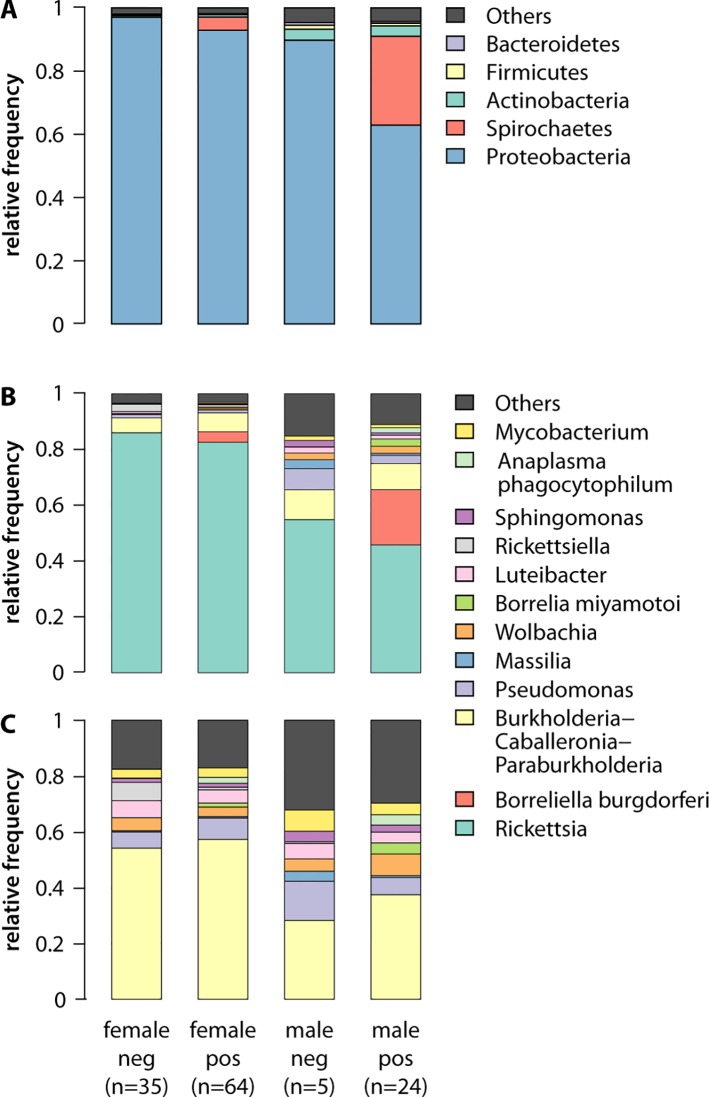Figure 3.
Abundance of microbial taxa in male and female ticks with and without B. burgdorferi infection reflects the greater diversity of the male microbiome. (A) At the phylum level, B. burgdorferi is evident in the abundance of Spirochaetes in the infected ticks, and males have higher frequency non-Proteobacteria phyla, reflecting the greater diversity of their microbiome. Here, “Others” (grey) represents all reads unclassifiable using the 16S SILVA reference database with a 99% identity cutoff. (B) The greater microbiome diversity in males, and higher abundance B. burgdorferi in infected males (19.89% vs 3.75%; t-test = 4.0505, p = 0.00048), is also evident at the level of genera. Females have a higher frequency of Rickettsia, potentially due to the high abundance of that genus in the ovaries(Noda et al., 1997). (C) The greater diversity of male microbiome on the genera level persists even when both B. burgdorferi and Rickettsia are removed from the analysis.

